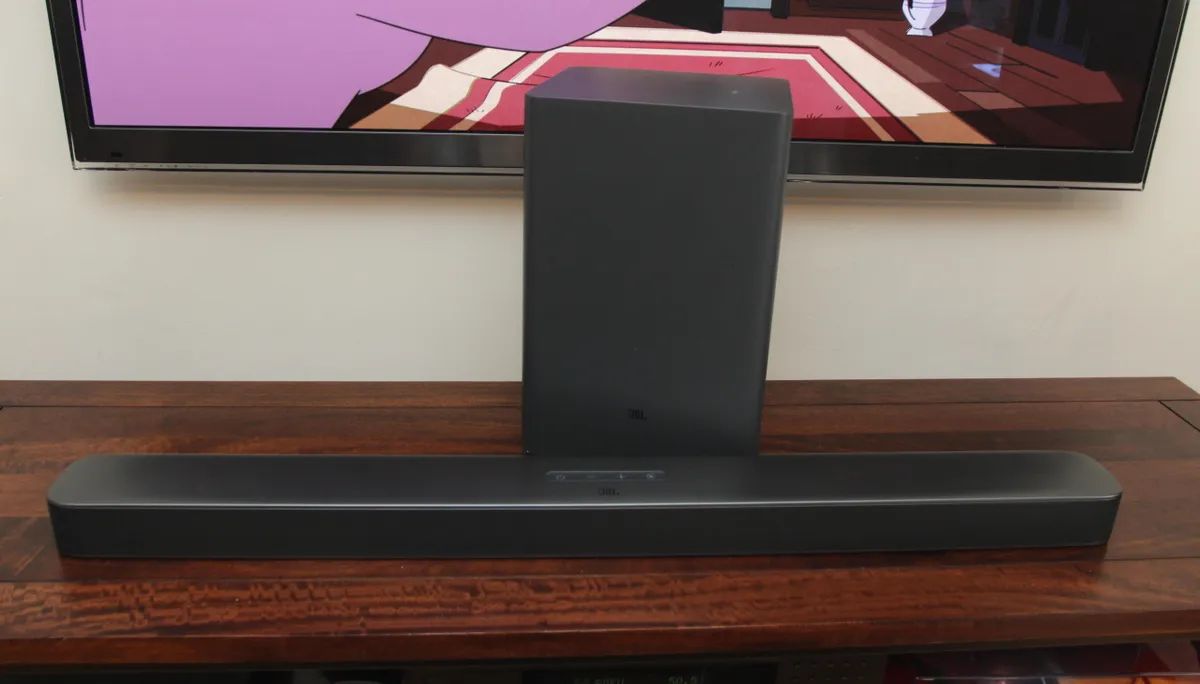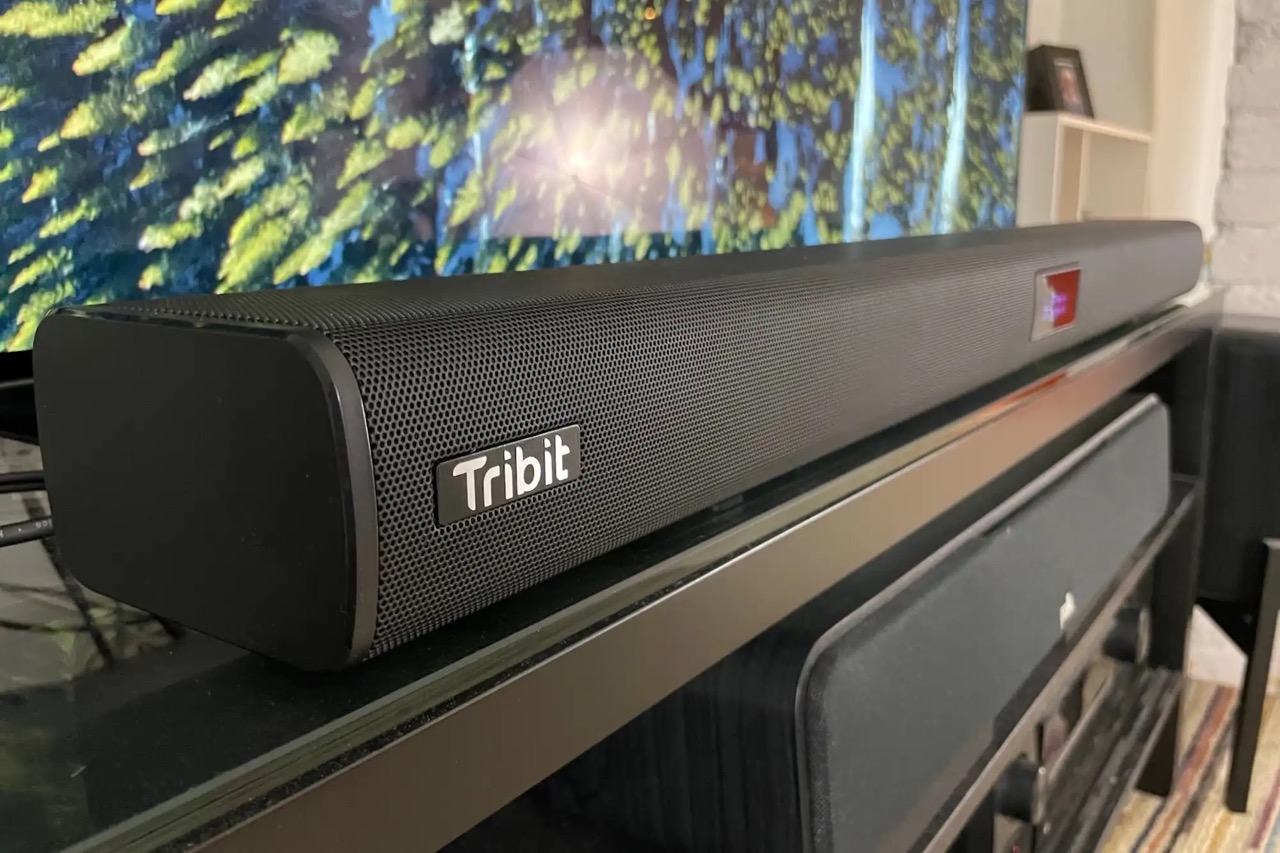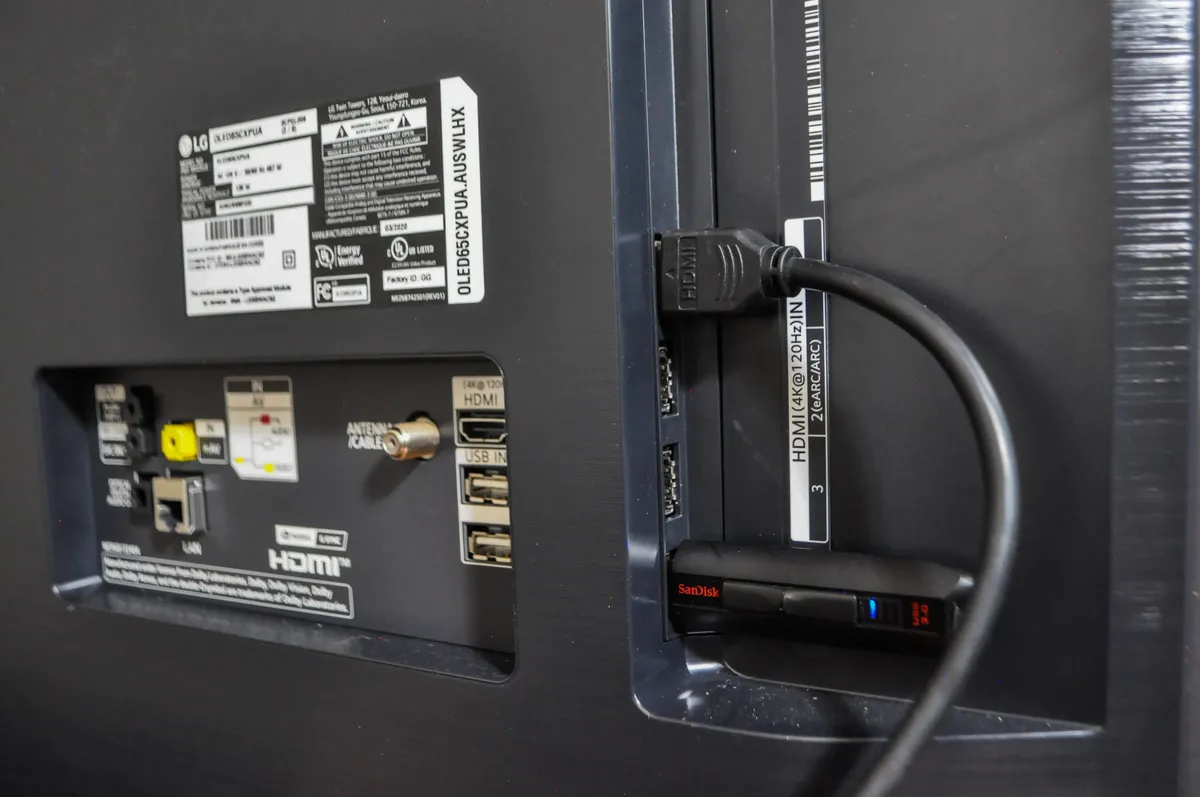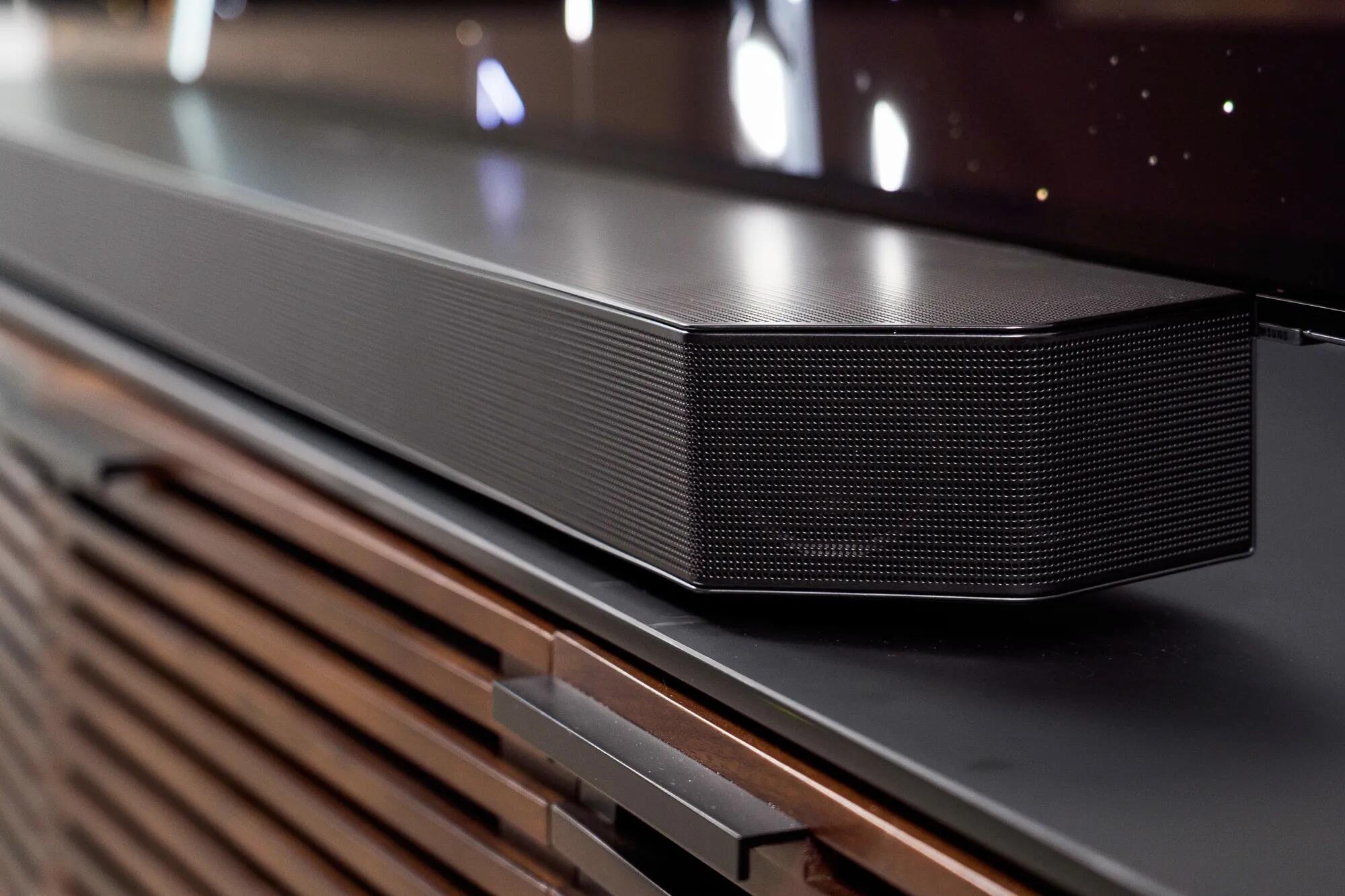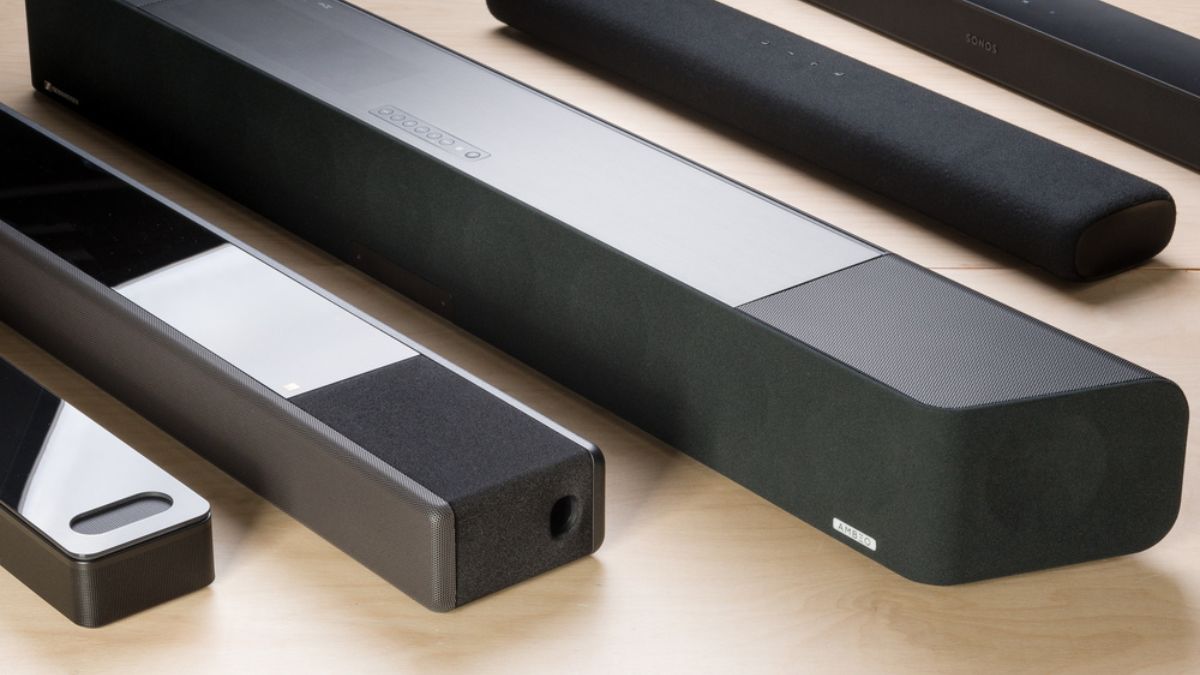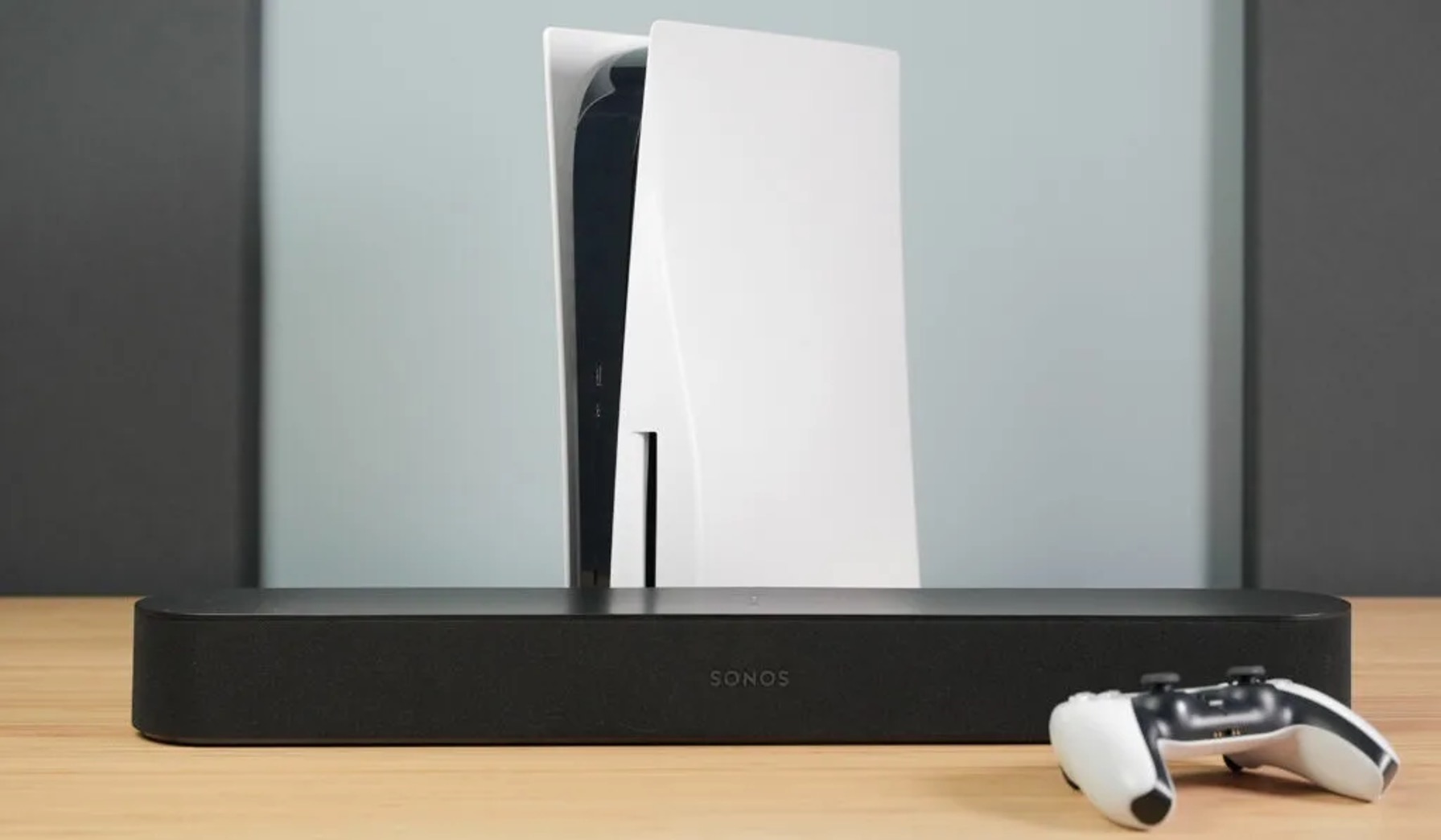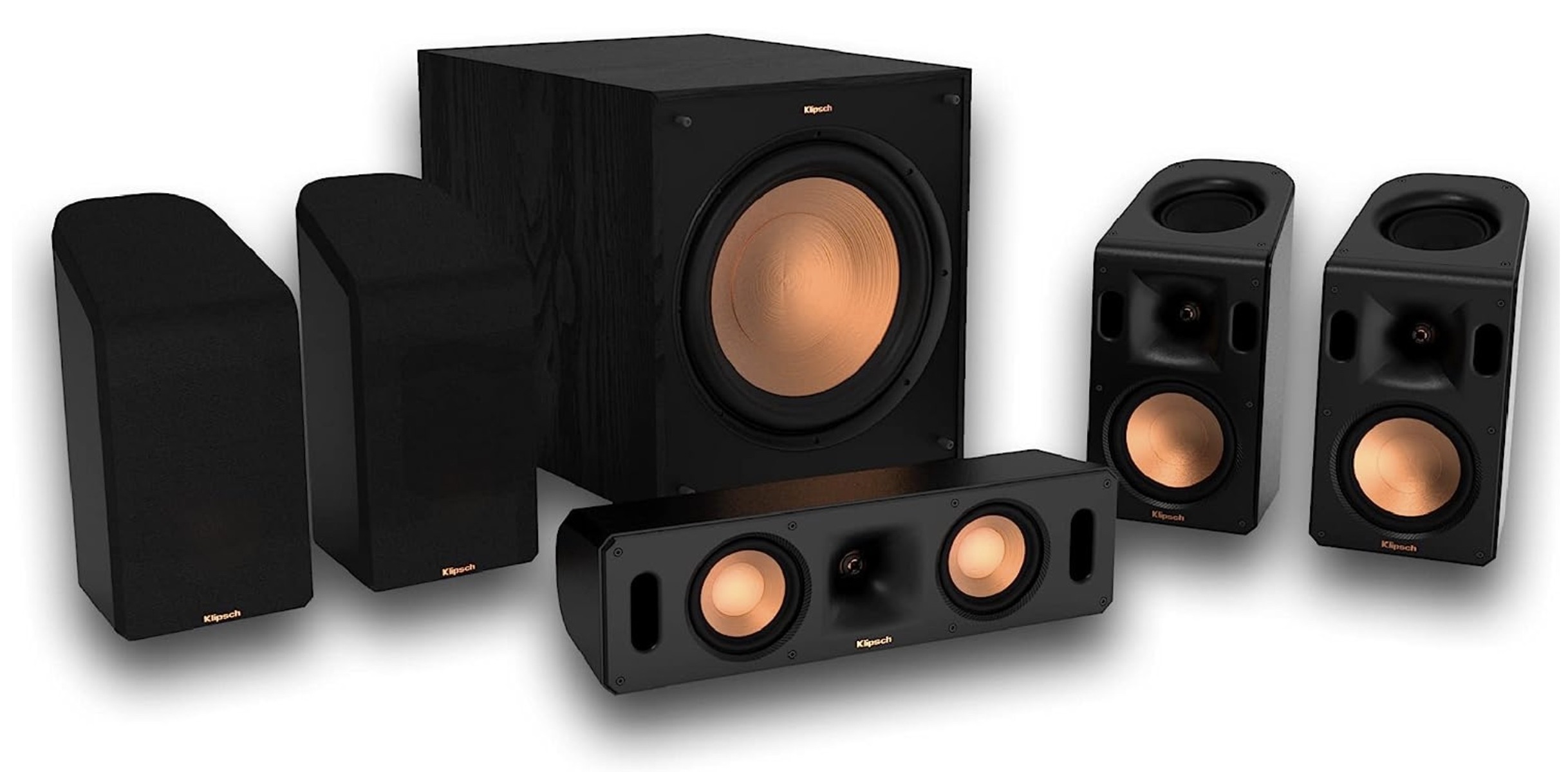Introduction
Welcome to the world of enhanced audio experiences with soundbars. Technology has come a long way in delivering immersive sound without the need for multiple speakers and complex setups. Soundbars have revolutionized the way we enjoy movies, music, and even gaming. They offer a convenient and space-saving solution for those seeking an upgrade from the built-in speakers on their TVs.
In this article, we will delve into the world of 2.1 soundbars. A 2.1 soundbar is a popular choice among audio enthusiasts due to its ability to deliver a balanced and dynamic sound experience. Whether you’re watching your favorite movie, streaming music, or playing video games, a 2.1 soundbar can provide an enhanced audio experience that will elevate your entertainment.
But what exactly is a 2.1 soundbar? How does it differ from other soundbar configurations? What are the key features and advantages of a 2.1 soundbar? In this guide, we will answer these questions and help you choose the right 2.1 soundbar for your needs.
So, if you’re ready to enhance your audio experience and bring the theater-like sound into your home, let’s dive into the world of 2.1 soundbars and discover how they can transform your entertainment setup.
The Basics of Soundbars
Before we delve into the specifics of 2.1 soundbars, let’s first understand the basics of soundbars. A soundbar is a slim, elongated speaker system designed to deliver high-quality audio while eliminating the need for multiple speakers and wires scattered throughout the room.
Unlike traditional home theater systems with multiple speakers placed strategically around the room, a soundbar houses multiple speakers in a single sleek unit. These speakers are positioned in such a way that they create a virtual surround sound experience, filling the room with immersive audio.
Soundbars can be connected to various devices, including TVs, streaming devices, gaming consoles, and music players. They provide a significant upgrade over built-in TV speakers, delivering clearer dialogue, richer bass, and a wider soundstage.
Soundbars come in different configurations, ranging from 2.0 to 5.1 channels. The numeral in the configuration indicates the number of speakers, while the decimal point defines the presence or absence of an additional subwoofer. For example, a 2.0 soundbar consists of two speakers without a subwoofer, while a 5.1 soundbar includes five speakers and a subwoofer.
Now that we have a general understanding of soundbars, let’s explore the specific features and advantages of a 2.1 soundbar in the next section.
What is a 2.1 Soundbar?
A 2.1 soundbar is a specific configuration of a soundbar system that consists of two main speakers and a dedicated subwoofer. The “2” refers to the two main speakers, usually positioned on the left and right sides of the soundbar, while the “.1” represents the addition of a separate subwoofer.
The two main speakers in a 2.1 soundbar are responsible for reproducing the mid-range and high-frequency sounds, including dialogue, vocals, and instruments. They ensure clear and detailed audio across the sound spectrum. On the other hand, the subwoofer is dedicated to reproducing low-frequency sounds, primarily deep bass tones. This allows for a more dynamic and impactful audio experience, especially during action-packed movie scenes or musical performances.
The addition of a subwoofer in a 2.1 soundbar enhances the overall audio quality, providing a richer and more immersive sound. The dedicated subwoofer delivers deep, rumbling bass that adds depth and intensity to your favorite movies, music, and games. It brings out the low-frequency details that are often missing or weak with built-in TV speakers or soundbars without a subwoofer.
One of the key advantages of a 2.1 soundbar is its ability to reproduce a wide soundstage. The combination of the two main speakers and the subwoofer creates a surround sound effect that fills the room, allowing you to feel fully immersed in the audio experience. It brings movies to life, making it feel like you’re in the middle of the action. Additionally, a 2.1 soundbar can also enhance your music listening experience by providing greater clarity and depth to the sound.
Compared to higher channel configurations like 5.1 or 7.1, a 2.1 soundbar offers a simpler setup with fewer speakers and cables. It is an ideal choice for those who desire an improved audio experience but have limited space or prefer a more minimalistic look in their living room. 2.1 soundbars strike the right balance between performance and convenience, making them a popular choice among consumers.
Now that you have a better understanding of what a 2.1 soundbar is, let’s explore its key features in the next section.
Key Features of a 2.1 Soundbar
When considering a 2.1 soundbar, it’s essential to understand the key features that set it apart from other configurations. Here are the primary features you can expect from a 2.1 soundbar:
- Two Main Speakers: A 2.1 soundbar consists of two main speakers that handle the mid-range and high-frequency sounds. These speakers provide clear dialogue, detailed vocals, and crisp instrument reproduction, enhancing your audio experience.
- Dedicated Subwoofer: The inclusion of a separate subwoofer is a standout feature of a 2.1 soundbar. The subwoofer is designed to reproduce deep bass tones, adding a layer of depth and impact to your movies, music, and games. It delivers the rumbling lows that make explosions more powerful and music more immersive.
- Enhanced Audio Quality: With the combination of the two main speakers and the subwoofer, a 2.1 soundbar offers superior audio quality compared to built-in TV speakers or soundbars without a subwoofer. You can expect a wider soundstage, improved clarity, and more balanced sound reproduction.
- Virtual Surround Sound: While a 2.1 soundbar may not provide the same level of surround sound as higher channel configurations, it still offers a virtual surround sound experience. Through advanced sound processing technology, the soundbar creates the illusion of sound coming from different directions, immersing you in the audio and enhancing your viewing or listening experience.
- Convenience and Minimalistic Design: A 2.1 soundbar provides a space-saving solution with a simplified setup compared to multi-speaker systems. It eliminates the need for multiple speakers and messy cables, offering a more streamlined and minimalistic design that seamlessly blends into your living room or home theater setup.
- Wireless Connectivity: Many 2.1 soundbars come with wireless connectivity options such as Bluetooth or Wi-Fi. This allows you to easily connect your soundbar to compatible devices like smartphones, tablets, or computers to stream music wirelessly. Some models even support multi-room audio, enabling you to create a seamless audio experience throughout your home.
These key features make a 2.1 soundbar an attractive option for users who want an immersive audio experience without the complexity of a multi-speaker system. The combination of two main speakers and a dedicated subwoofer ensures high-quality sound reproduction and enhances your enjoyment of movies, music, and games.
In the next section, we will explore the advantages and disadvantages of a 2.1 soundbar to help you make an informed decision.
Advantages and Disadvantages of a 2.1 Soundbar
Like any audio equipment, 2.1 soundbars come with their own set of advantages and disadvantages. Understanding these can help you make an informed decision about whether a 2.1 soundbar is the right choice for you. Let’s explore the advantages and disadvantages:
Advantages
- Improved Sound Quality: One of the main advantages of a 2.1 soundbar is the enhanced audio quality. The combination of the two main speakers and the dedicated subwoofer ensures clearer dialogue, richer bass, and a wider soundstage. You’ll enjoy a more immersive and engaging audio experience compared to built-in TV speakers.
- Space-Saving Design: 2.1 soundbars offer a more compact and streamlined design compared to traditional multi-speaker setups. They are ideal for those who have limited space or prefer a clean and minimalistic look in their living room. With a 2.1 soundbar, you can enjoy high-quality audio without sacrificing valuable space.
- Simplified Setup: Setting up a 2.1 soundbar is relatively easy and straightforward. With just a few connections and minimal cables, you can have your soundbar up and running in no time. This simplicity makes it accessible even to those who are not tech-savvy or prefer a hassle-free setup process.
- Convenience and Versatility: 2.1 soundbars are designed to offer convenience and versatility. Many models come with wireless connectivity options like Bluetooth or Wi-Fi, allowing you to easily connect your devices and stream music wirelessly. Some soundbars even support multi-room audio, allowing you to expand your audio setup throughout your home.
- Cost-Effective Solution: Compared to higher channel configurations like 5.1 or 7.1 sound systems, a 2.1 soundbar offers a more cost-effective solution. It provides a significant audio upgrade without the need for multiple speakers and complex setups. This makes it an attractive option for those on a budget or looking for a more affordable audio solution.
Disadvantages
- Limited Surround Sound Experience: While 2.1 soundbars can create a virtual surround sound experience, they may not match the level of immersion provided by higher channel setups. If you’re seeking a truly immersive surround sound experience, you may want to consider a higher channel configuration.
- Dependence on Subwoofer: 2.1 soundbars heavily rely on the subwoofer for deep bass reproduction. If the subwoofer malfunctions or is not well-integrated with the soundbar, it can affect the overall audio quality. It’s important to choose a 2.1 soundbar with a quality subwoofer for optimal performance.
- Placement Limitations: The placement of a subwoofer in a 2.1 soundbar setup can be challenging. It requires finding the right spot to ensure balanced sound and avoid excessive bass resonance. Additionally, the dimensions of the soundbar itself may limit placement options, especially if you have a narrow TV stand or wall-mount setup.
By considering the advantages and disadvantages above, you can make an informed decision about whether a 2.1 soundbar is the right choice for your audio needs and preferences.
In the next section, we will provide some tips on how to choose the right 2.1 soundbar for your specific requirements.
How to Choose the Right 2.1 Soundbar for Your Needs
Choosing the right 2.1 soundbar for your specific requirements can greatly enhance your audio experience. Here are some key factors to consider when selecting a 2.1 soundbar:
1. Audio Performance:
Pay attention to the audio performance of the soundbar. Look for models that offer clear and detailed sound reproduction across the entire frequency range. Consider the power output, frequency response, and the quality of the drivers used in the soundbar to ensure optimal audio performance.
2. Subwoofer Quality:
The quality of the subwoofer is crucial for deep and impactful bass reproduction. Look for a 2.1 soundbar that comes with a well-designed and properly integrated subwoofer. Consider the size, power, and frequency response of the subwoofer to ensure it delivers the low-frequency details effectively.
3. Connectivity Options:
Consider the connectivity options available on the soundbar. Look for models that offer a variety of inputs such as HDMI, optical, and analog, so you can connect your preferred devices easily. Additionally, wireless connectivity options like Bluetooth or Wi-Fi can provide added convenience for streaming music wirelessly.
4. Size and Design:
Take into account the size and design of the soundbar. Measure the space where you plan to place the soundbar and ensure it fits appropriately. Consider the aesthetics and the overall design to ensure it complements your existing home theater setup or living room decor.
5. Additional Features:
Explore the additional features offered by the soundbar. Look for features like built-in virtual surround sound, EQ settings, voice-enhancement technology, or smart assistant compatibility, according to your preferences. These additional features can further enhance your audio experience and offer greater versatility.
6. Reviews and Recommendations:
Read reviews and seek recommendations from trusted sources or fellow audio enthusiasts. Customer reviews and expert opinions can provide valuable insights into the performance, reliability, and user experience of different 2.1 soundbar models. This information can help you make a more informed decision.
By considering these factors and taking your specific audio needs and preferences into account, you can choose a 2.1 soundbar that delivers the best audio performance and enhances your entertainment experience.
In the next section, we’ll explore the setup and usage of a 2.1 soundbar to ensure you get the most out of your new audio device.
Setting Up and Using a 2.1 Soundbar
Setting up and using a 2.1 soundbar is generally straightforward and user-friendly. Here are the basic steps to help you get started:
1. Choose an Ideal Location:
Determine the best location for your soundbar and subwoofer. Place the soundbar directly under or above your TV for optimal audio synchronization. Ensure that the subwoofer is positioned near the soundbar to achieve balanced bass response. Experiment with different placements to find the best audio performance.
2. Connect the Soundbar to Your TV:
Connect the soundbar to your TV using an HDMI ARC (Audio Return Channel) or an optical cable. HDMI ARC allows for two-way audio communication between the TV and soundbar, simplifying the setup process. If your TV doesn’t support HDMI ARC, an optical cable can be used for audio connectivity.
3. Connect Other Devices:
If you have other audio sources such as a gaming console, media player, or streaming device, connect them to your soundbar using the available input options. HDMI, RCA, or auxillary inputs are common options found on a 2.1 soundbar. Make sure to select the appropriate input source on the soundbar to switch between devices.
4. Set Up the Subwoofer:
Place the subwoofer in close proximity to the soundbar, ideally within a few feet. Connect the subwoofer to the soundbar using the provided cables or via wireless connection, if available. Follow the manufacturer’s instructions for pairing the subwoofer with the soundbar and adjusting any necessary settings.
5. Adjust Sound Settings:
Once everything is connected, adjust the sound settings on the soundbar according to your preferences. Most soundbars have built-in equalizer (EQ) settings that allow you to customize the audio output to suit different genres or preferences. Experiment with the settings to achieve the desired sound balance and clarity.
6. Remote Control and Smart Assistants:
Familiarize yourself with the remote control or smartphone app that comes with the soundbar. These can be used to adjust volume, select input sources, and access additional settings. Some soundbars also offer compatibility with smart assistants like Amazon Alexa or Google Assistant, allowing you to control the soundbar with voice commands.
By following these steps and referring to the user manual provided with your 2.1 soundbar, you can efficiently set up and start using your new audio device, immersing yourself in a superior sound experience.
In the next section, we will address some frequently asked questions about 2.1 soundbars to provide further clarity on this audio solution.
Frequently Asked Questions about 2.1 Soundbars
Here are some frequently asked questions about 2.1 soundbars:
1. Can I connect a 2.1 soundbar to my TV without HDMI ARC?
Yes, you can connect a 2.1 soundbar to your TV using alternative methods if HDMI ARC is not available. The most common option is to use an optical cable, which provides digital audio transmission between the TV and soundbar. Alternatively, you can use RCA or auxillary connections, depending on the available ports on your TV and soundbar.
2. Do I need to buy additional cables for a 2.1 soundbar setup?
Most 2.1 soundbars come with the necessary cables included in the package. However, it’s a good idea to check the contents of the box or read the product specifications to confirm if any additional cables are required. If needed, you can purchase cables separately based on the specific connections required by your devices.
3. Can I connect my smartphone or tablet to a 2.1 soundbar via Bluetooth?
Many 2.1 soundbars offer Bluetooth connectivity, allowing you to connect your smartphone or tablet wirelessly to the soundbar. This enables you to stream music or other audio content directly from your mobile device, enhancing convenience and versatility.
4. Are 2.1 soundbars compatible with smart home systems?
Some 2.1 soundbars come with smart assistant compatibility, such as Amazon Alexa or Google Assistant. This allows you to control certain functions of the soundbar using voice commands. However, not all 2.1 soundbars have this feature, so it’s important to check the product specifications if smart home compatibility is a requirement for you.
5. Can I use a 2.1 soundbar with my gaming console?
A 2.1 soundbar can be connected to your gaming console, providing enhanced audio for an immersive gaming experience. Most gaming consoles have HDMI or optical output options that can be used to connect to the soundbar. Check the connectivity options of your console and the soundbar to ensure compatibility.
6. Can I add additional speakers to a 2.1 soundbar system?
A 2.1 soundbar system is designed to work with two main speakers and a dedicated subwoofer. It is not typically designed to accommodate additional speakers. If you are interested in a multi-speaker setup, you may want to consider higher channel configurations, such as 5.1 or 7.1 systems.
If you have any other questions or concerns about 2.1 soundbars, it’s advisable to consult the product documentation or reach out to the manufacturer’s customer support for clarification.
Now that we’ve addressed some commonly asked questions, let’s conclude this guide with a brief summary.
Conclusion
2.1 soundbars offer a convenient and effective solution for upgrading your audio experience without the need for a complex multi-speaker system. With two main speakers and a dedicated subwoofer, a 2.1 soundbar provides improved sound quality, enhanced bass, and a wider soundstage. It is a popular choice for those seeking a balance between audio performance and simplicity.
When choosing a 2.1 soundbar, consider factors such as audio performance, subwoofer quality, connectivity options, size, and design. Read reviews and seek recommendations to ensure you select a soundbar that meets your specific requirements and preferences.
Setting up a 2.1 soundbar is generally straightforward, involving connecting the soundbar and subwoofer to your TV and other devices. Adjusting sound settings and exploring additional features can further enhance your audio experience. Refer to the user manual and follow the manufacturer’s instructions for optimal setup and usage.
2.1 soundbars offer advantages such as improved sound quality, space-saving design, simplified setup, convenience, and cost-effectiveness. However, they may have limitations in terms of surround sound experience and subwoofer placement.
By understanding the features, advantages, and considerations of 2.1 soundbars, you can make an informed decision and enjoy an immersive audio experience in your home. Whether you’re watching movies, streaming music, or playing video games, a 2.1 soundbar can elevate your entertainment to a whole new level.







